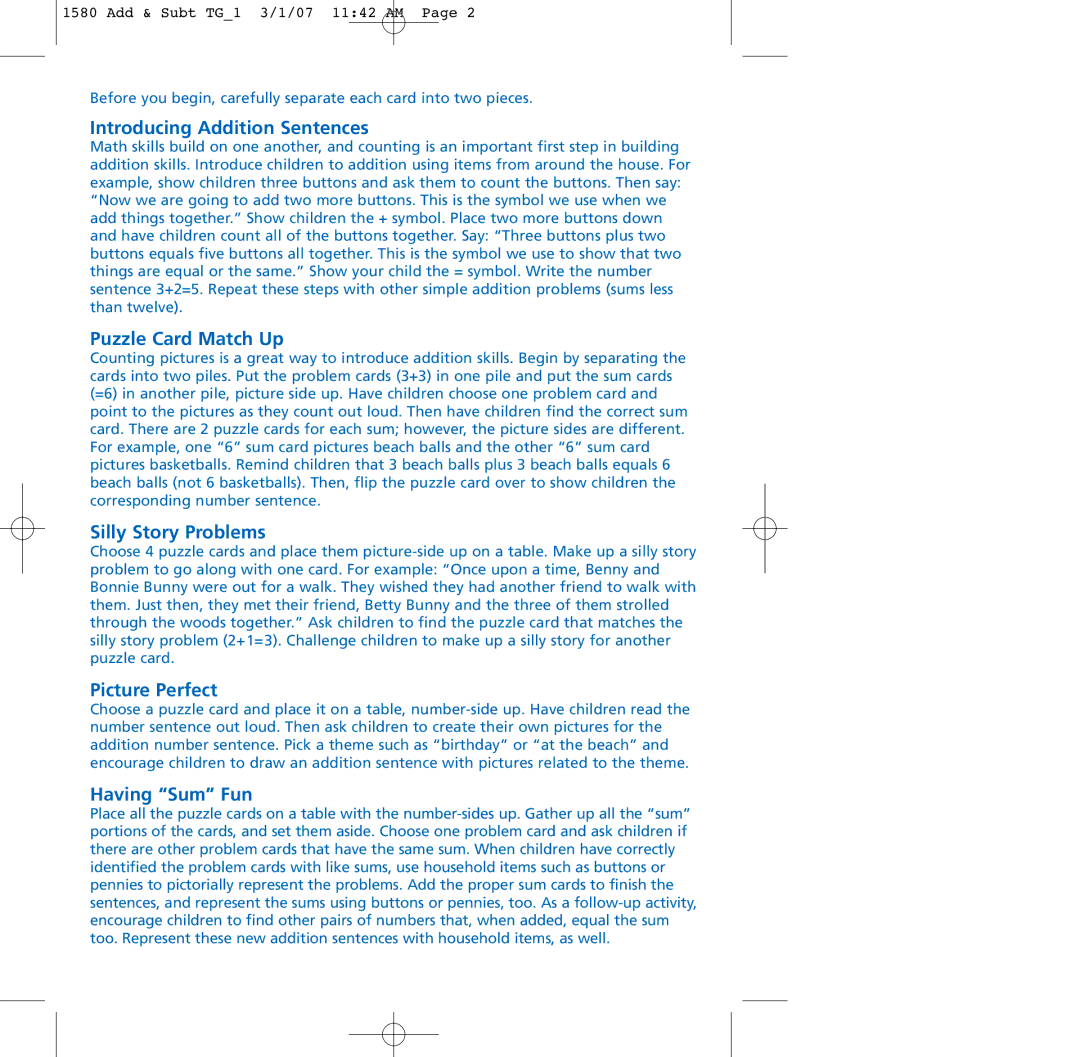
1580 Add & Subt TG_1 3/1/07 11:42 AM Page 2
Before you begin, carefully separate each card into two pieces.
Introducing Addition Sentences
Math skills build on one another, and counting is an important first step in building addition skills. Introduce children to addition using items from around the house. For example, show children three buttons and ask them to count the buttons. Then say: “Now we are going to add two more buttons. This is the symbol we use when we add things together.” Show children the + symbol. Place two more buttons down and have children count all of the buttons together. Say: “Three buttons plus two buttons equals five buttons all together. This is the symbol we use to show that two things are equal or the same.” Show your child the = symbol. Write the number sentence 3+2=5. Repeat these steps with other simple addition problems (sums less than twelve).
Puzzle Card Match Up
Counting pictures is a great way to introduce addition skills. Begin by separating the cards into two piles. Put the problem cards (3+3) in one pile and put the sum cards (=6) in another pile, picture side up. Have children choose one problem card and point to the pictures as they count out loud. Then have children find the correct sum card. There are 2 puzzle cards for each sum; however, the picture sides are different. For example, one “6” sum card pictures beach balls and the other “6” sum card pictures basketballs. Remind children that 3 beach balls plus 3 beach balls equals 6 beach balls (not 6 basketballs). Then, flip the puzzle card over to show children the corresponding number sentence.
Silly Story Problems
Choose 4 puzzle cards and place them
Picture Perfect
Choose a puzzle card and place it on a table,
Having “Sum” Fun
Place all the puzzle cards on a table with the
